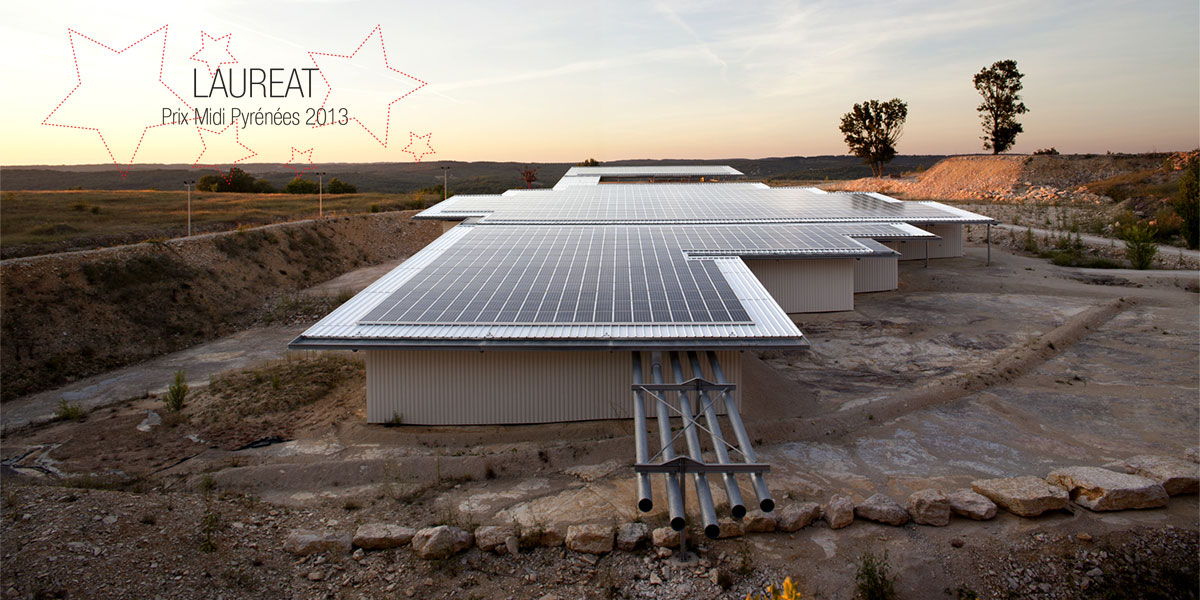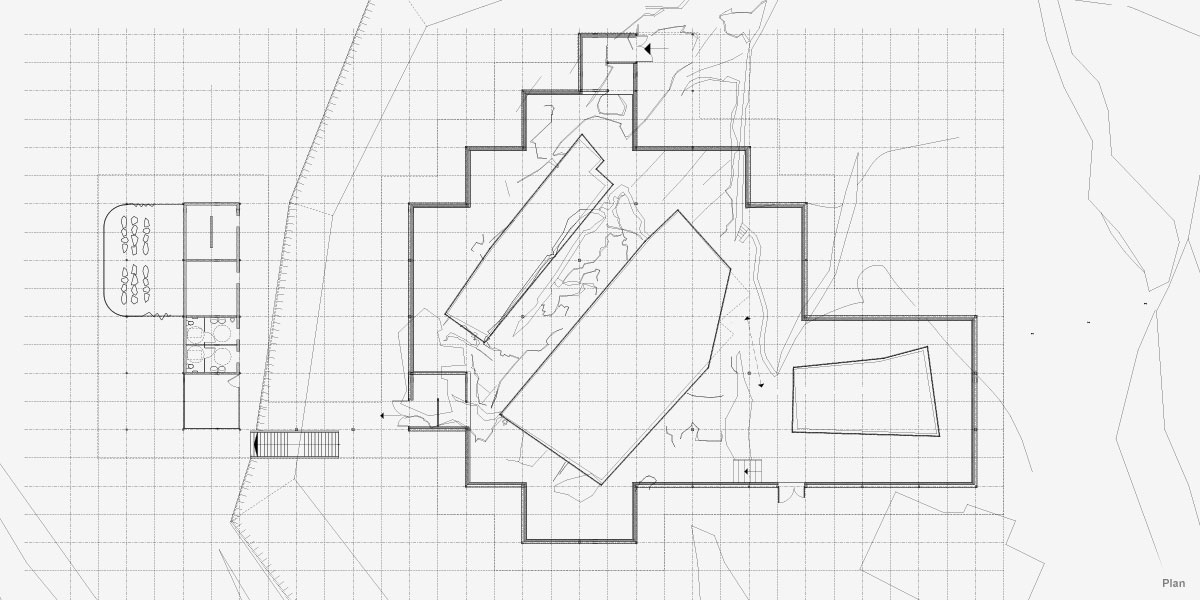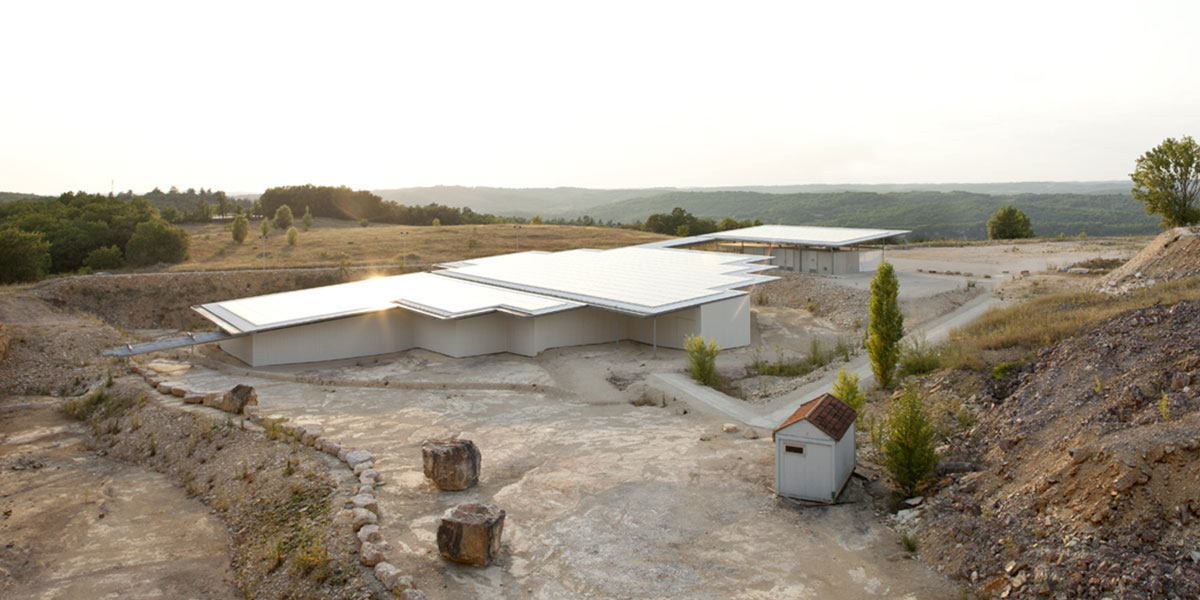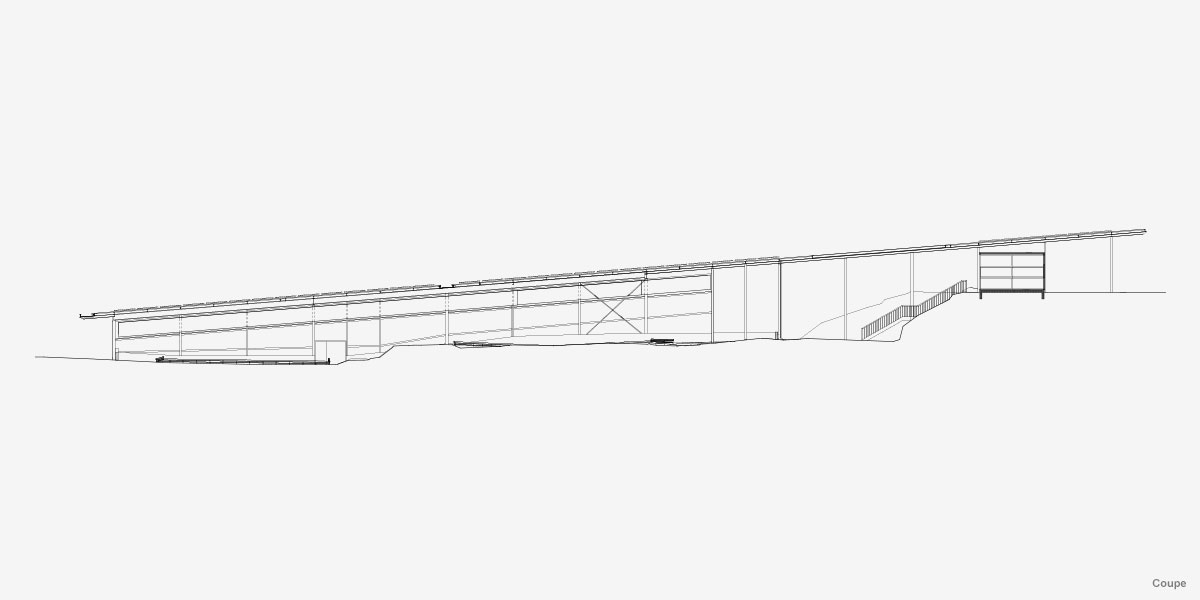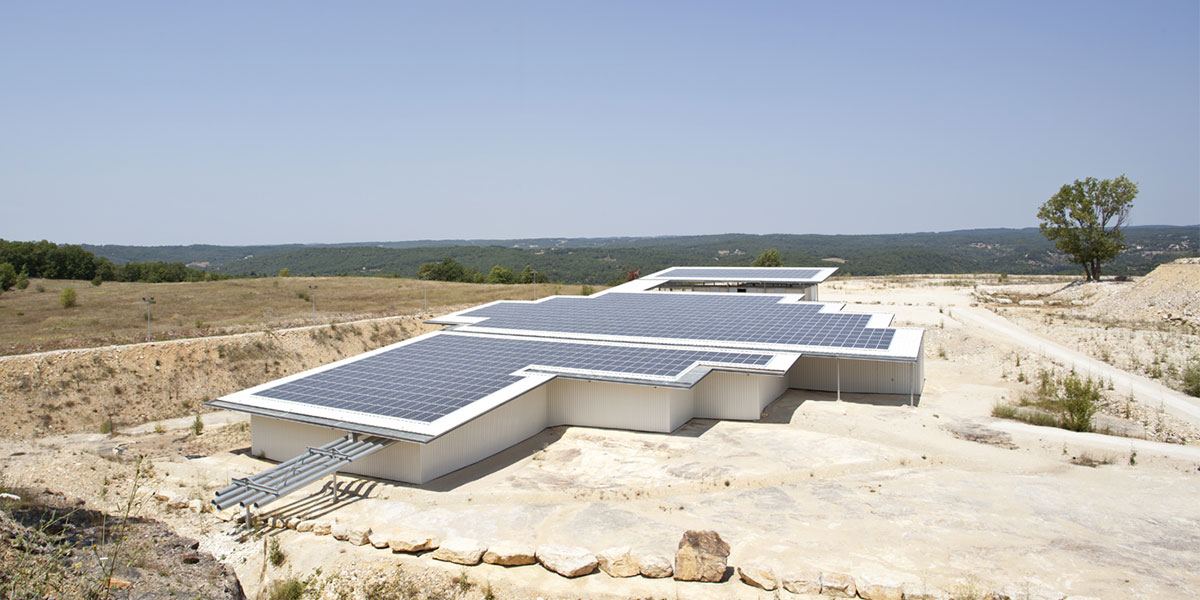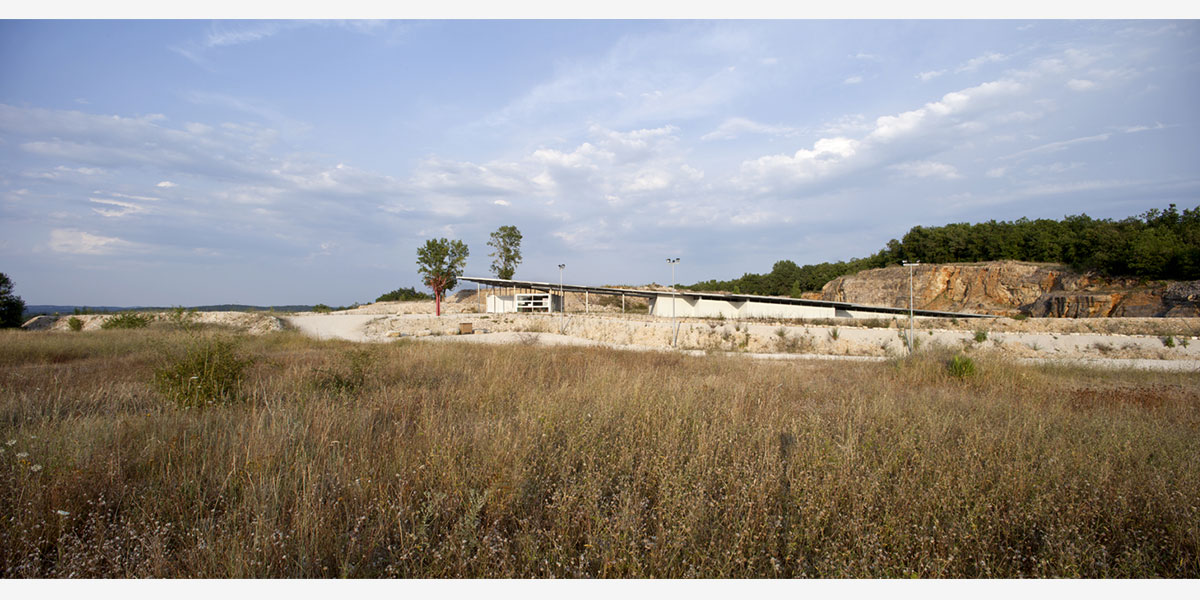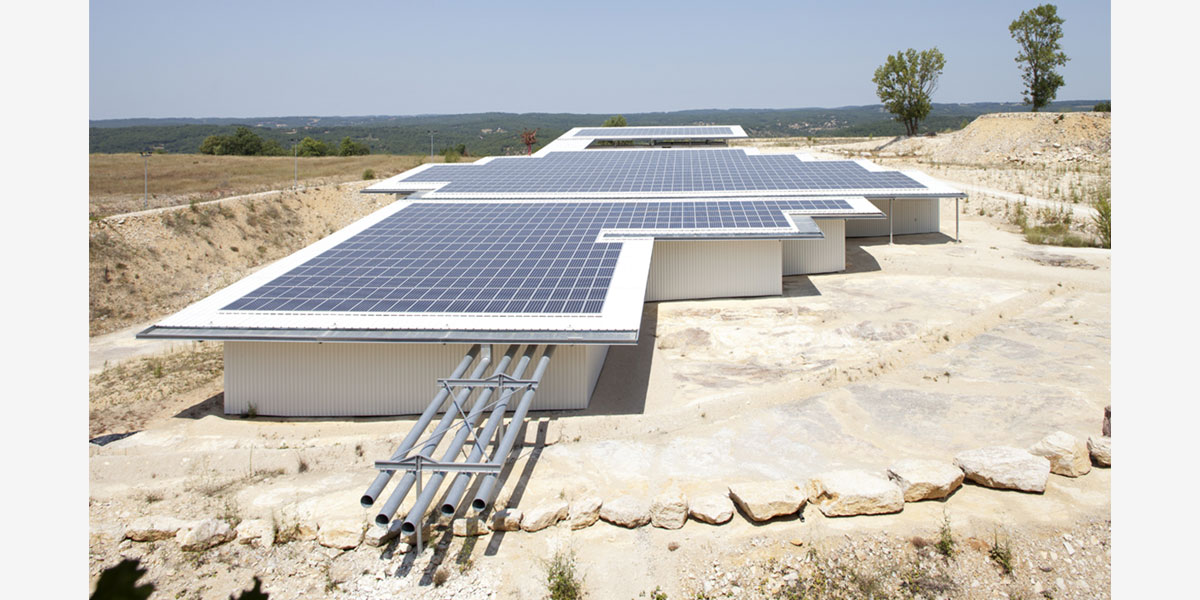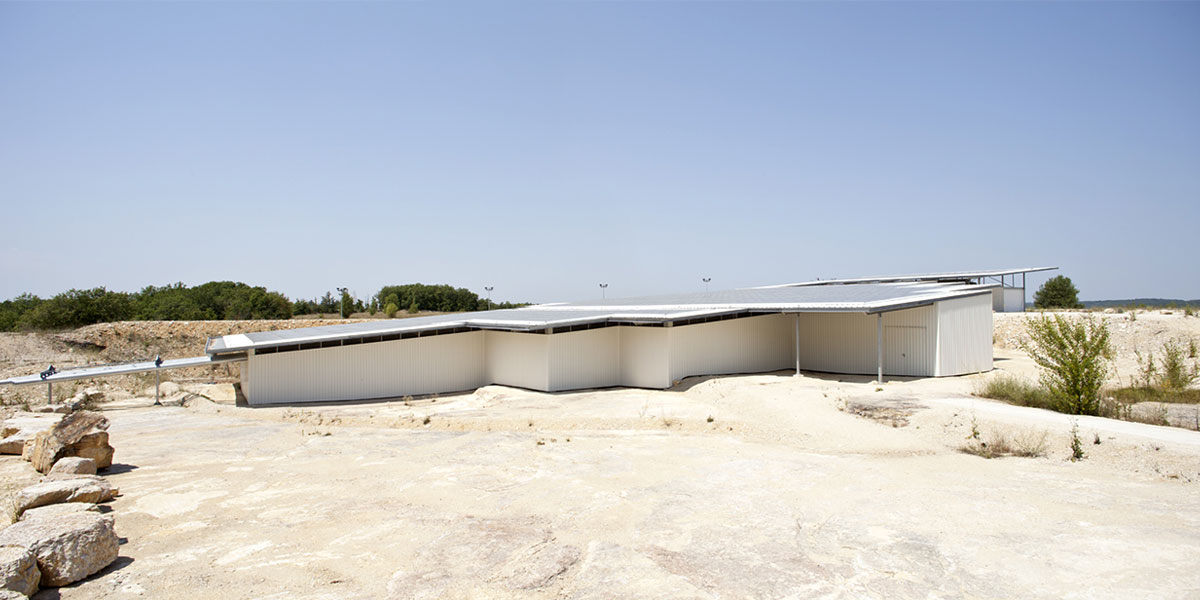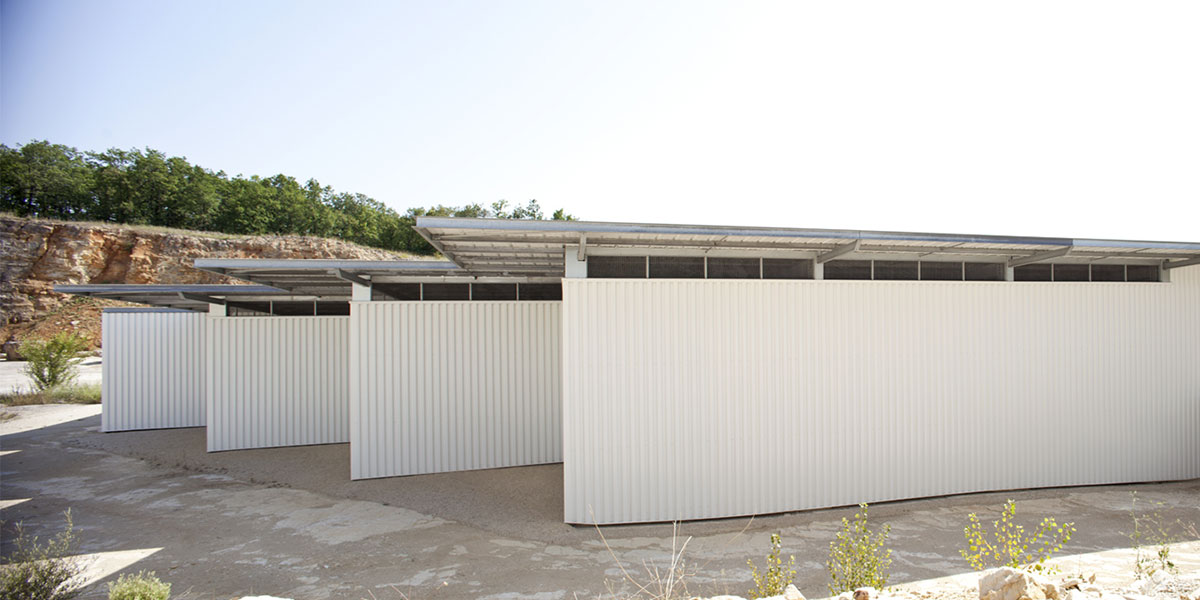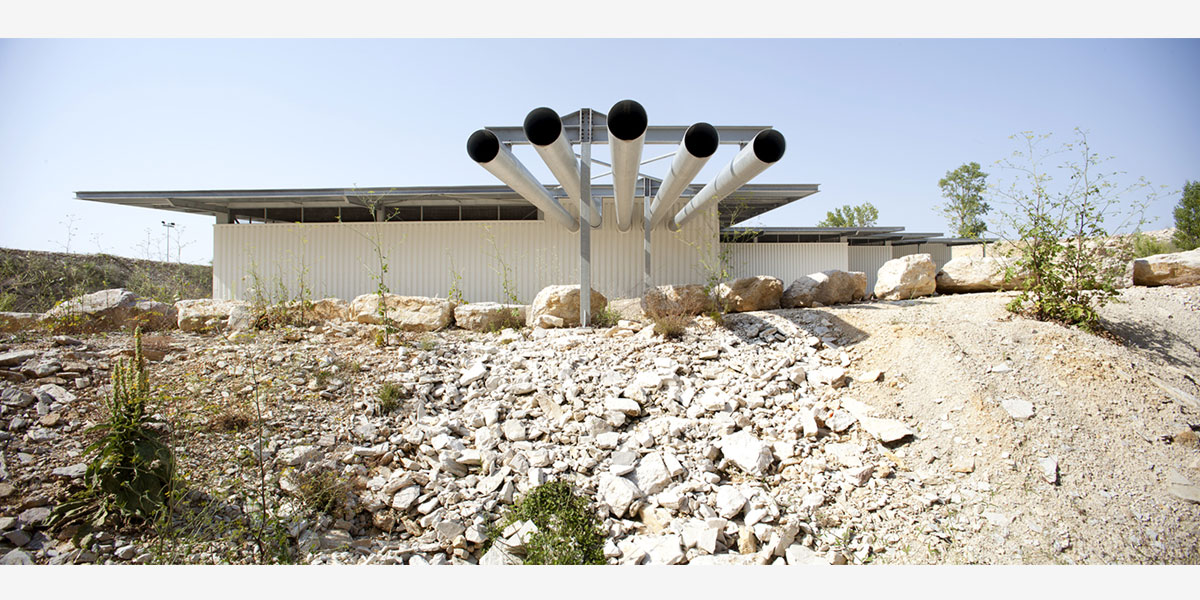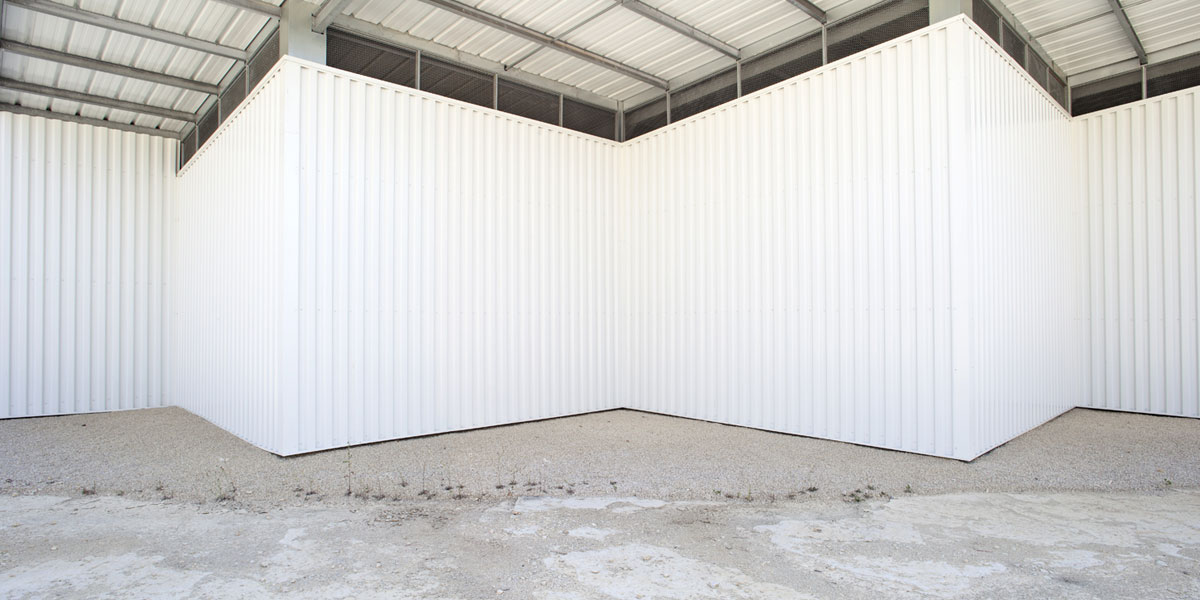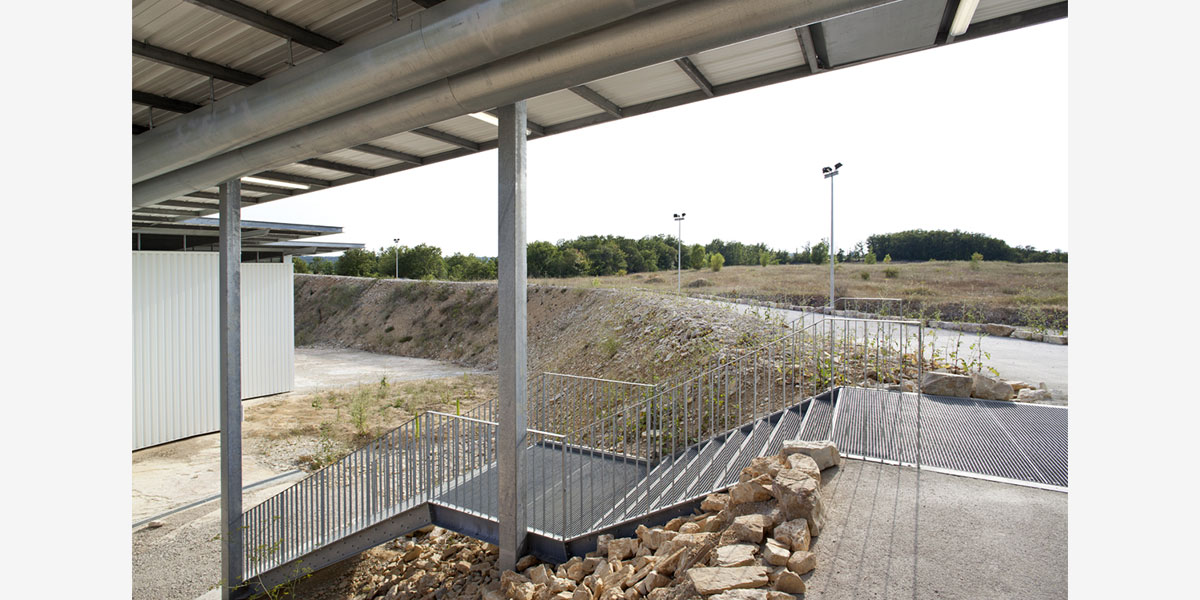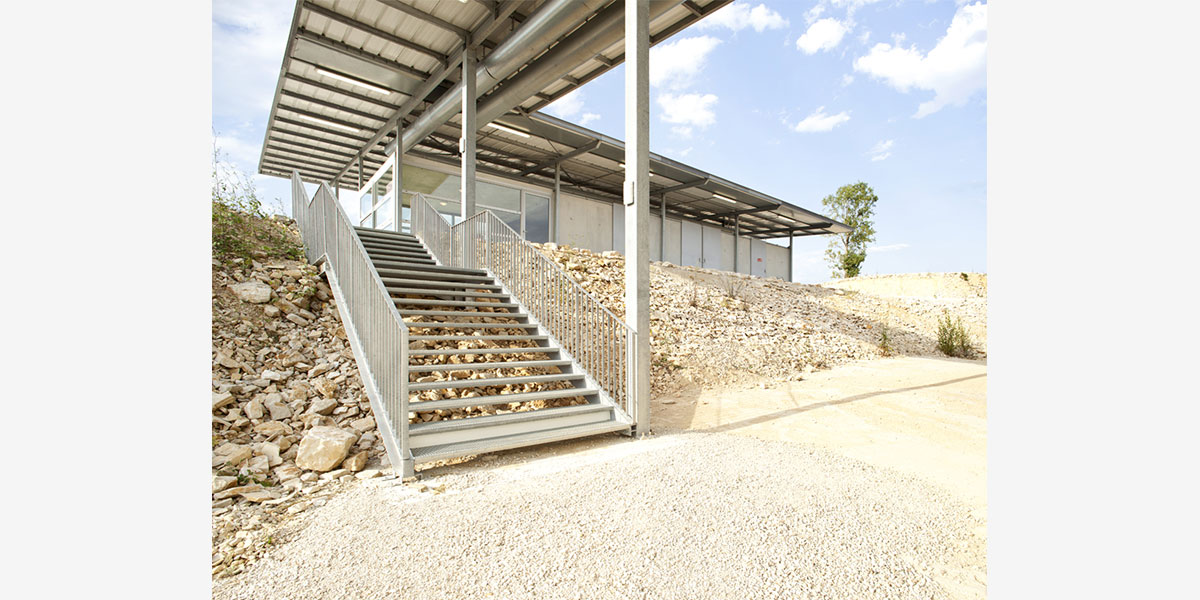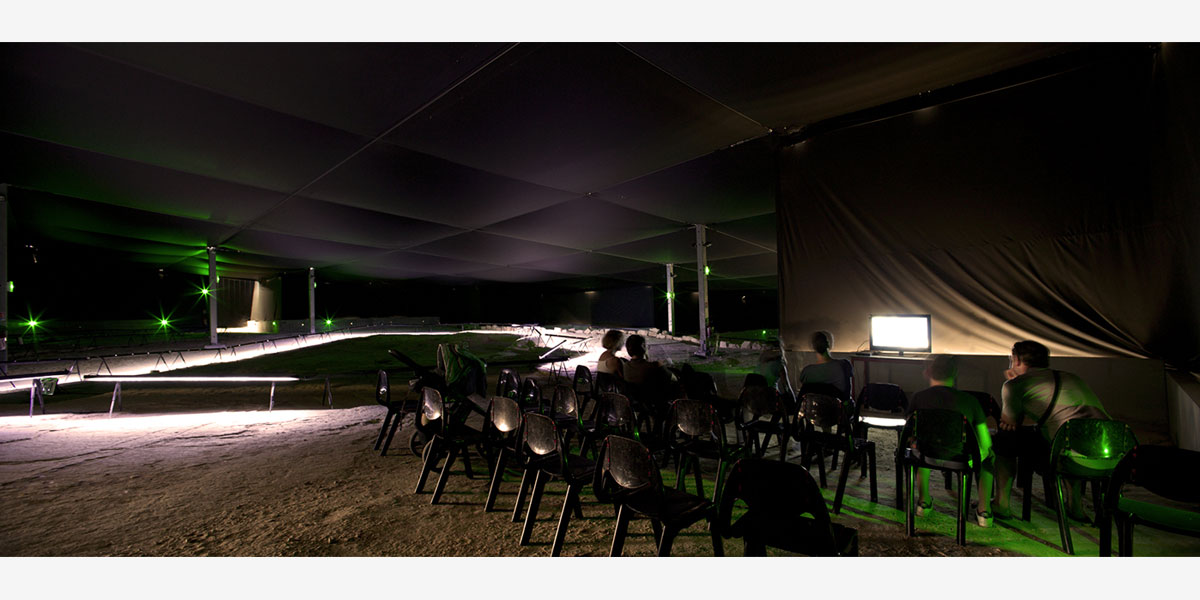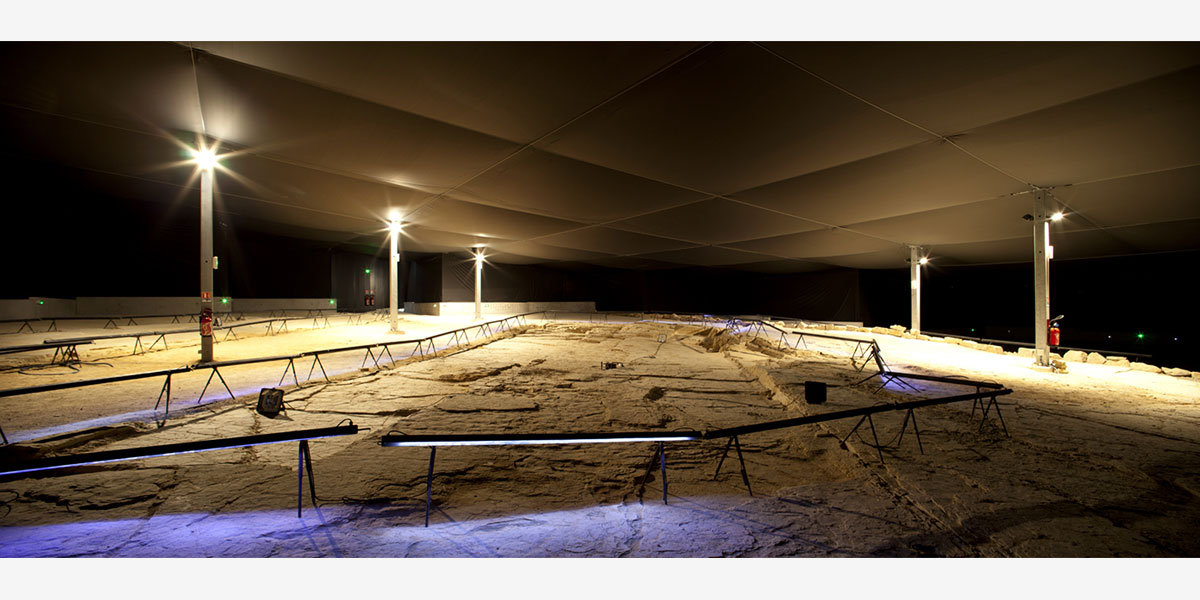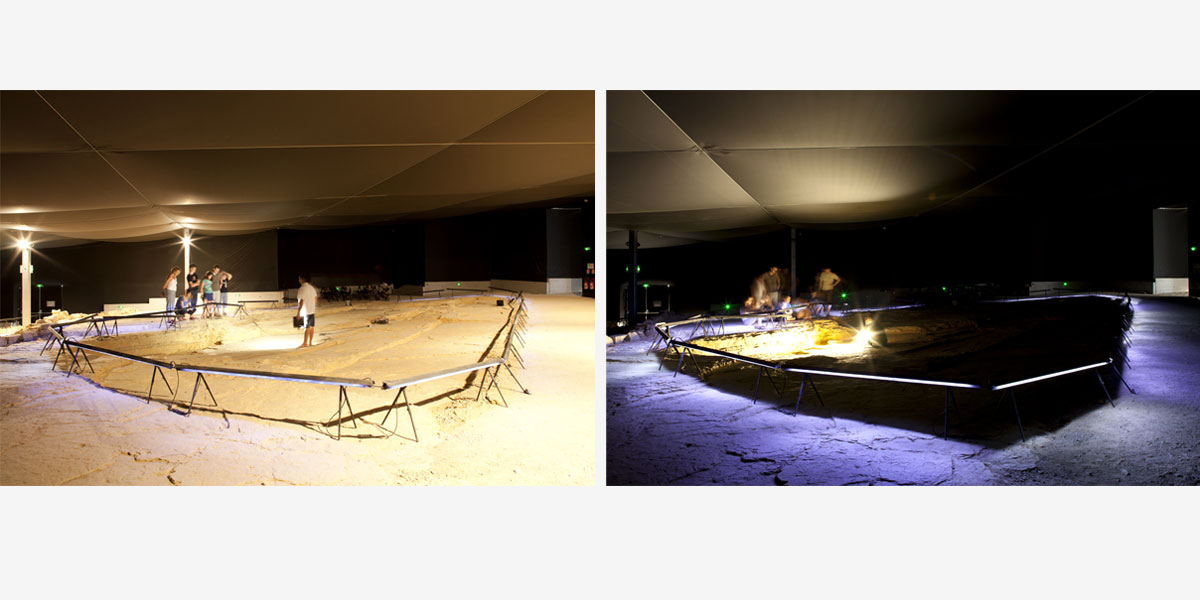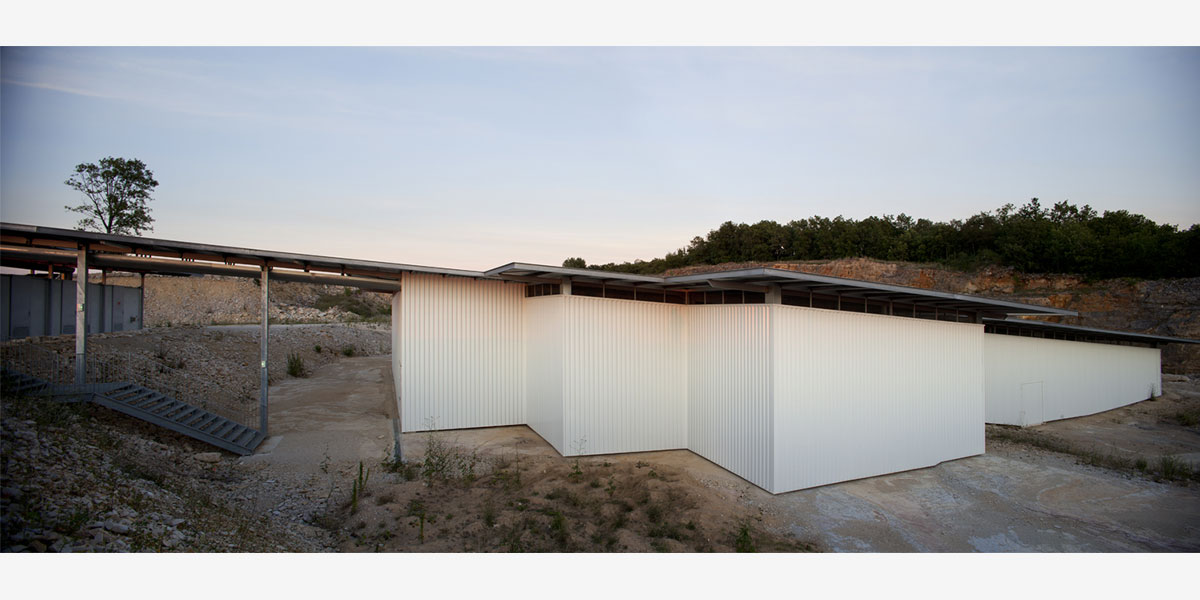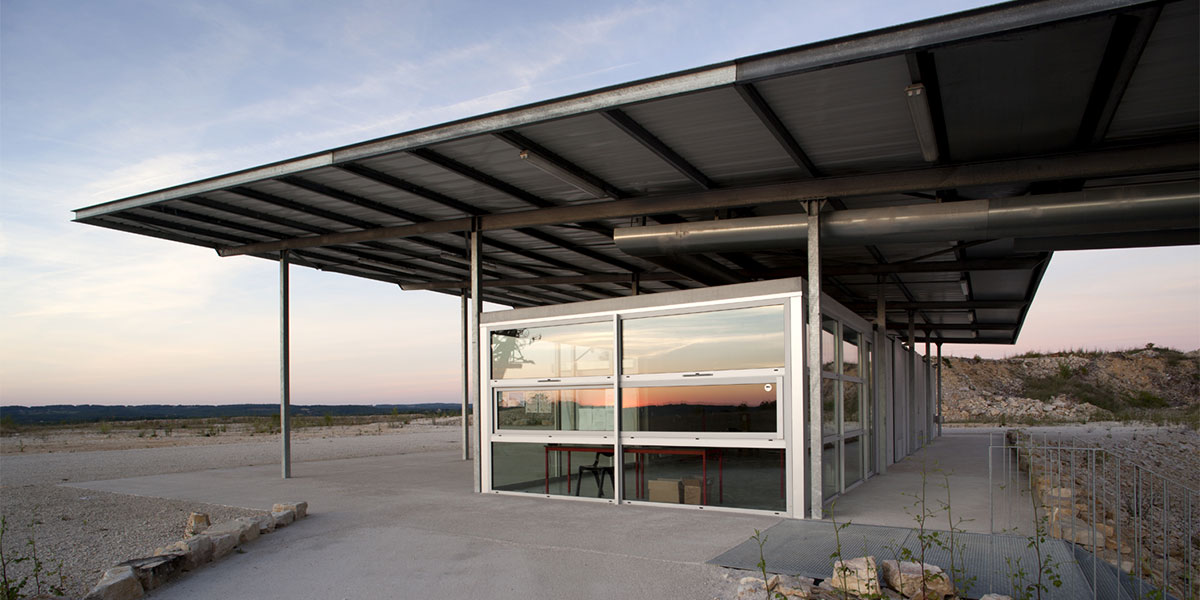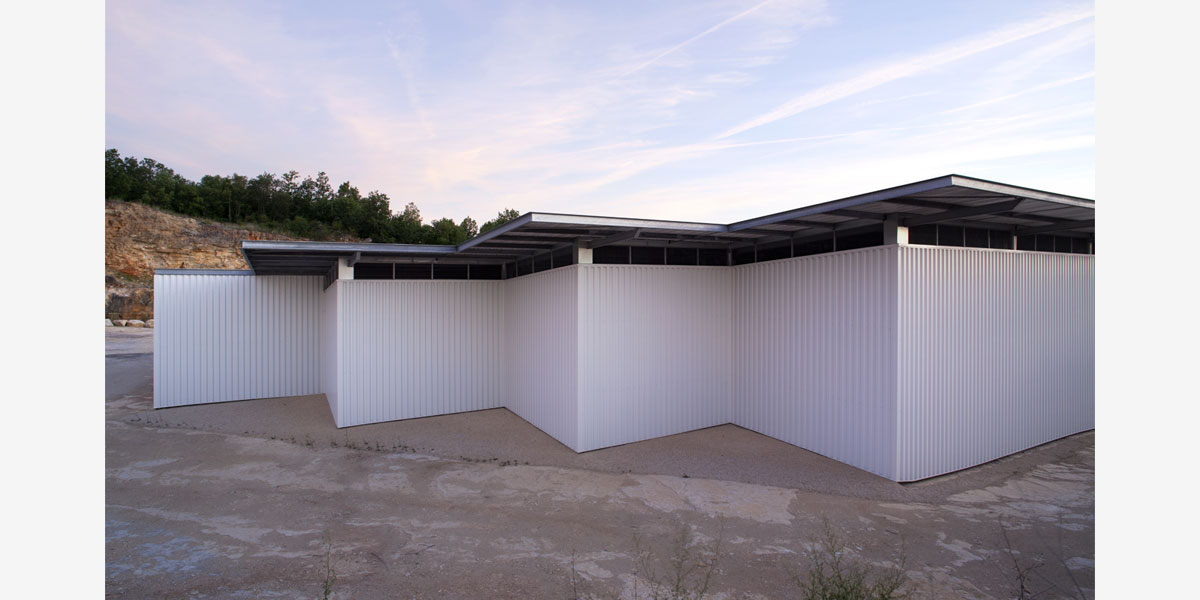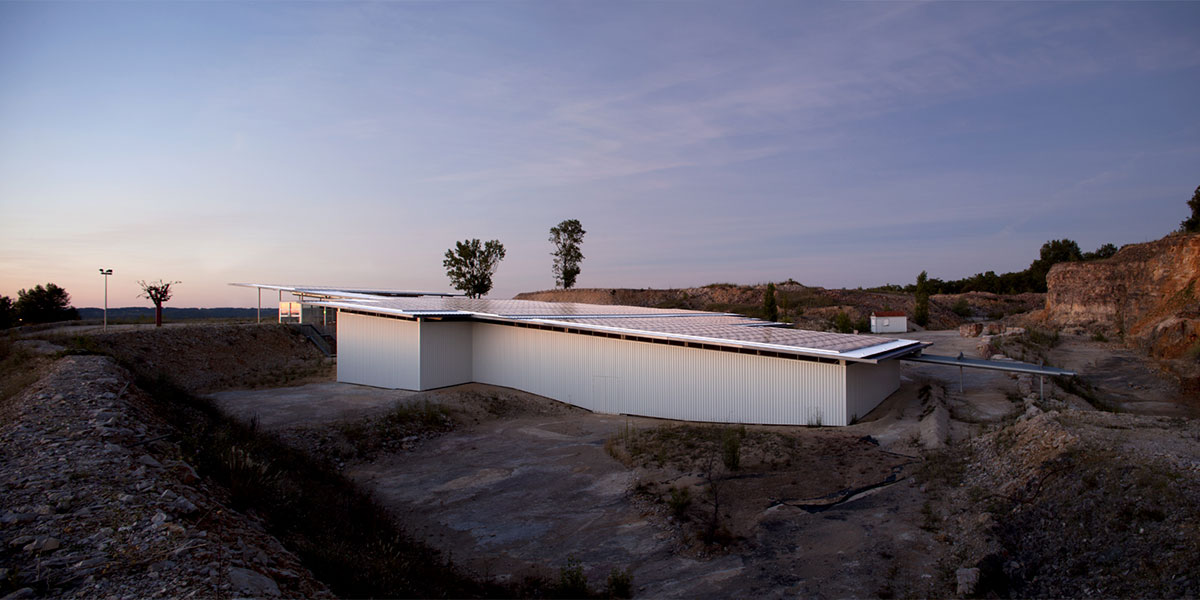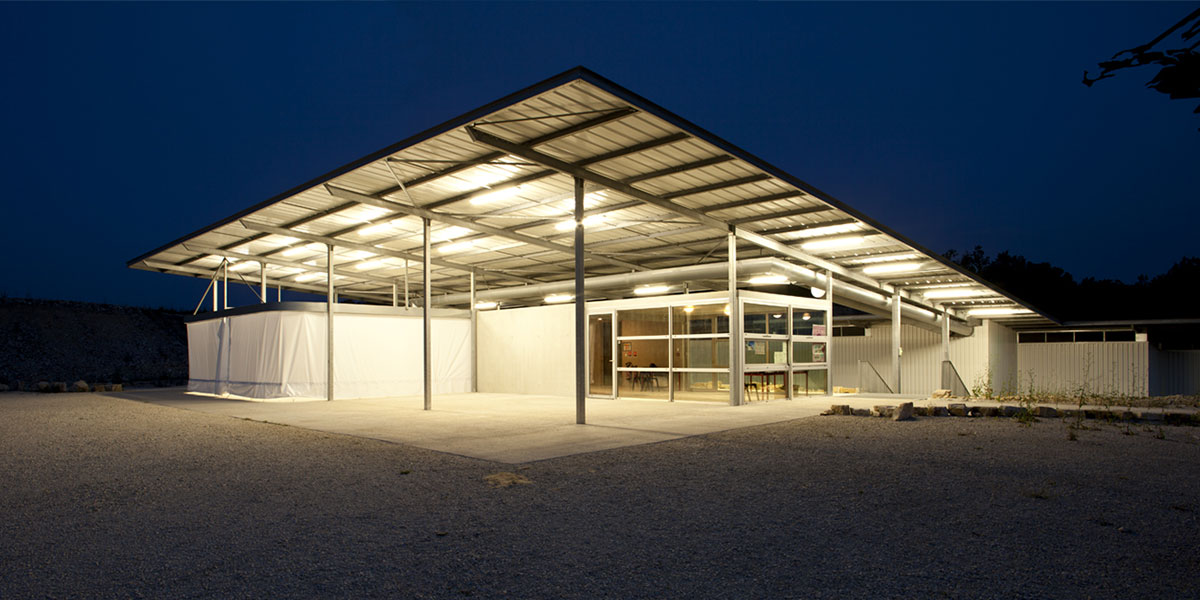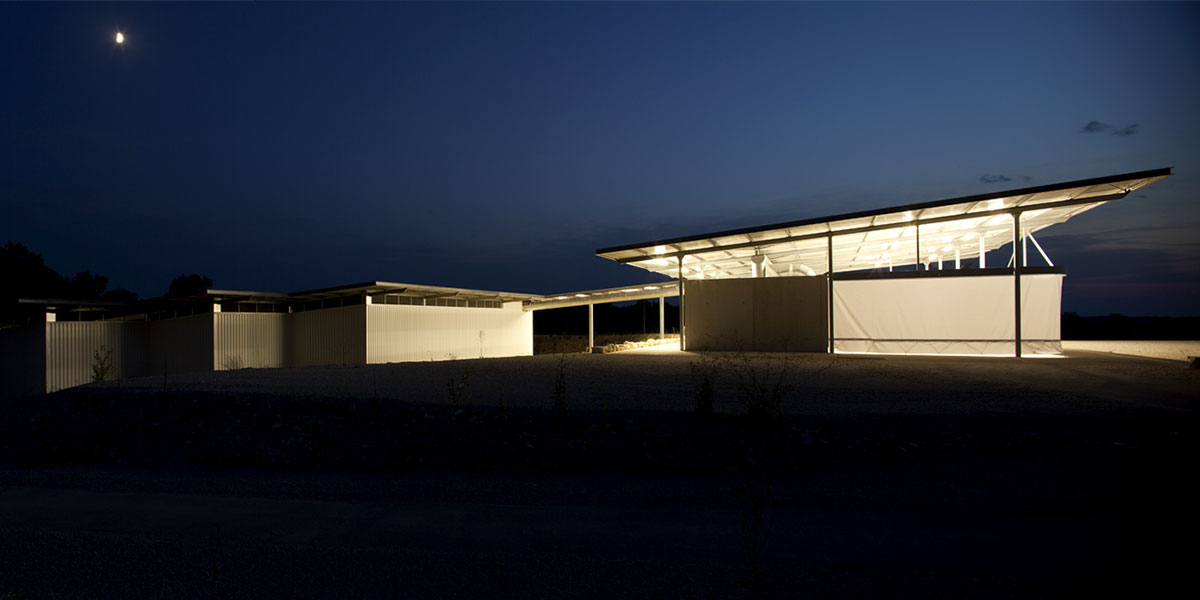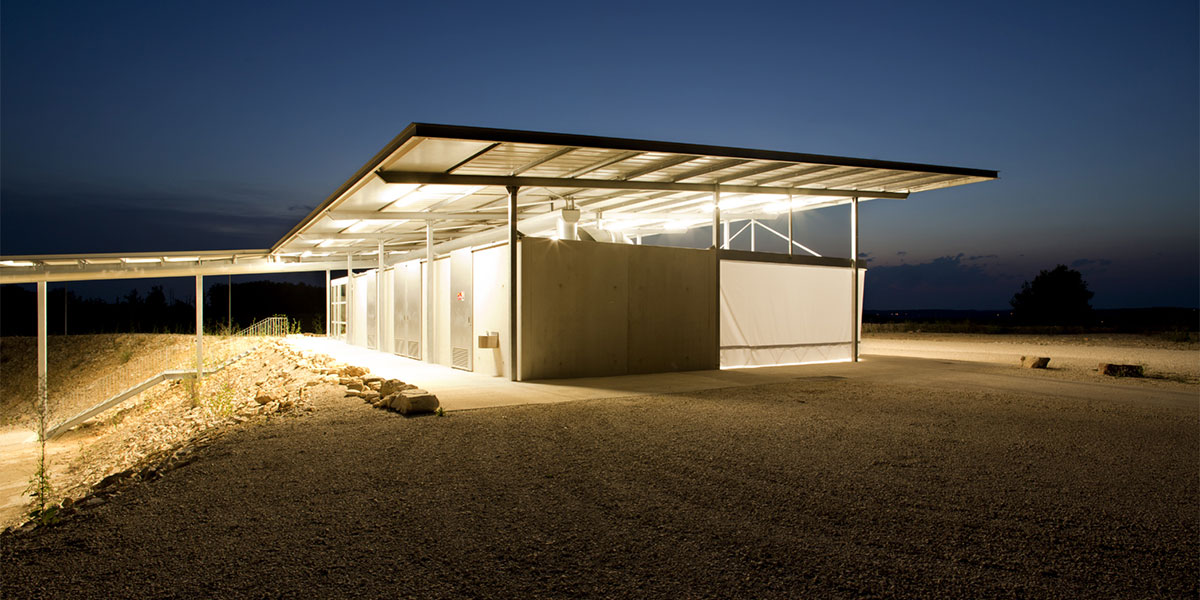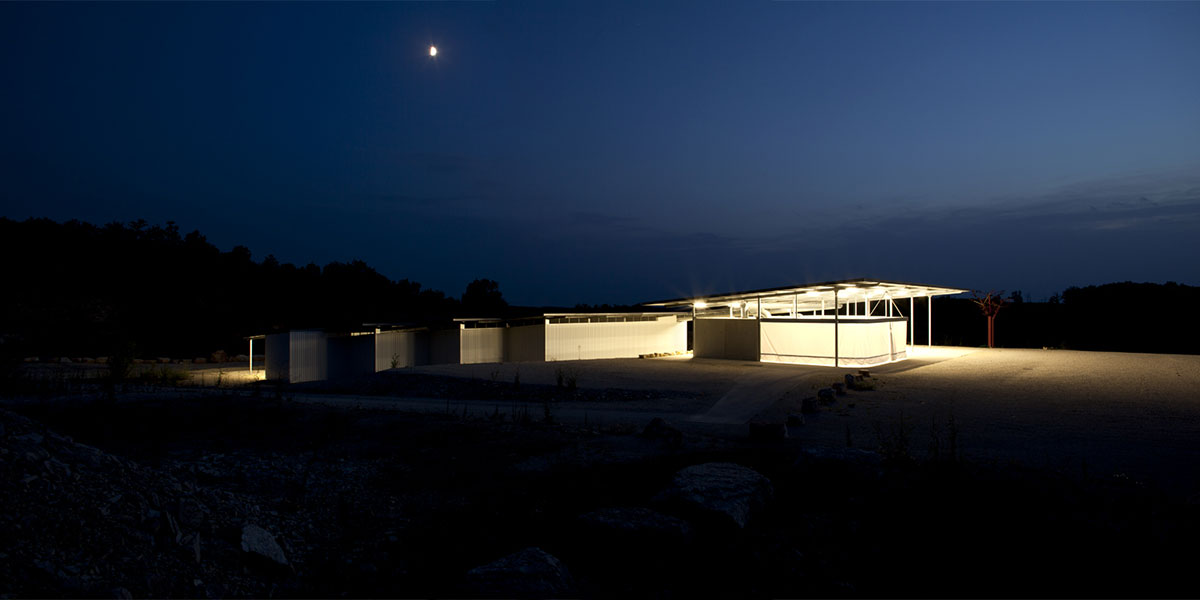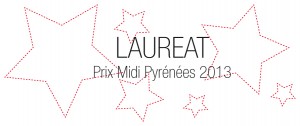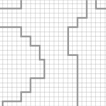
mission new construction – design + construction phases
client SEM Ida
project manager Atelier RK (agent to client),CoCo architecture, ID batiment, BERTI
date 2007-2011
footprint 2000m²
price 1,5M€ excl. taxes
location Crayssac (46)
In the Jurassic era, crustaceans, molluscs, crocodiles, turtles, dinosaurs and pterosaurs left their footprints on this site, which at the time was a lagoon. Each track is a moment in the life of an animal, 140 million years ago; a pterosaur standing in the rain, another landing, a dinosaur turning. This exceptional site requires protection against the weather, but also with respect to day light as these traces are only visible in low angle light. The purpose of these facilities is to control the preservation and presentation of these fossil prints.
The project’s allocated budget essentially provides for the covering and water level control over the biggest area possible. The challenge is therefore to provide quality construction at the lowest cost possible. To limit its cost, the project calls for quick and economic construction techniques (such as prefabricated construction), often used for industrial buildings. These techniques have the advantage of limiting the amount of foundations on site, reducing the time required for on-site construction, and the ability to be easily developed in the future. The visitor’s centre is a simple covered and closed off structure, naturally ventilated by large openings created in its facade. Black felt fabric is placed on all interior surfaces, allowing no light to penetrate the space. The roof is insulated and it and the walls are painted in white to manage overheating problems. The exterior surfaces are ‘refreshed’ by a sprinkler system, dissipating the heat stored in the sheet metal. This system reduces any radiated heat transmitted to the felt forming the internal skin of the space. The sprayed water is pumped from a storage tank fed by rain water collected from the roof. Photovoltaic panels cover the entirety of the roof transforming the centre into an electricity production hub. The resale of this electricity balances the budget of this operation.
Photo credit: Edouard Decam.





